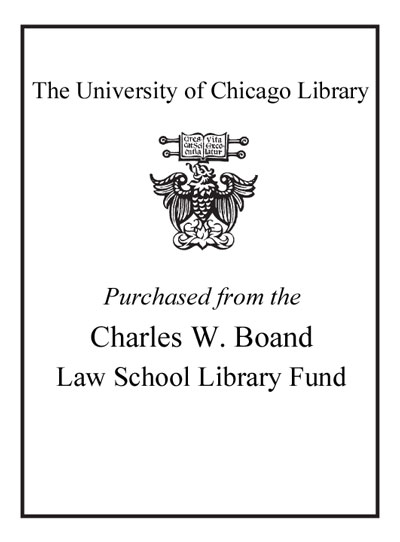The new Wigmore : a treatise on evidence : expert evidence /
Saved in:
| Author / Creator: | Kaye, D. H. (David H.), 1947- |
|---|---|
| Edition: | 2nd ed. |
| Imprint: | Austin [Tex.] : Wolters Kluwer Law & Business, Aspen Publishers, c2011- . |
| Description: | xxiii, 806 p. ; 26 cm |
| Language: | English |
| Subject: | |
| Format: | Print Book |
| URL for this record: | http://pi.lib.uchicago.edu/1001/cat/bib/8208031 |
Table of Contents:
- Chapter 1. Purposes, History, And Challenges Of Expert Evidence
- §1.1. Introduction
- §1.2. Distinctive Features of Expert Testimony
- §1.3. An Abbreviated History of Expert Evidence
- §1.4. Current Complaints About Expert Testimony
- Chapter 2. Subject Matter Of And Need For Expert Testimony
- §2.1. The Usefulness and Dangers of Expert Testimony
- §2.2. Expert Testimony on Ultimate Issues of Fact
- §2.3. Expert Testimony on Law
- §2.4. Expert Testimony on Credibility: General Rule
- §2.5. When Is Expert Testimony Necessary?
- §2.6. Distinction Between Lay and Expert Witnesses
- Chapter 3. Expert Qualifications
- §3.1. General Qualification Standards
- §3.2. Need for Testimony by Subspecialists
- §3.3. Expertise Required to Testify on the Reliability of Forensic Techniques
- §3.4. Requirement of Keeping Up-to-Date in One's Field
- §3.5. Qualifications of Medical Experts
- Chapter 4. The Bases For Expert Testimony
- §4.1. Introduction
- §4.2. Firsthand Observations
- §4.3. Presentation at Trial
- §4.4. Hypothetical Questions
- §4.5. The Common-Law Approach to Inadmissible Evidence as the Basis for Expert Testimony
- §4.6. The Modern Approach: Permitting Experts to Rely on Inadmissible Evidence to Form the Bases of Their Opinions
- §4.7. Disclosure of the Factual Basis
- §4.8. Current Standards for Evaluating Whether to Permit Disclosure
- §4.9. Disclosure: Conclusion
- §4.10. Expert Basis Testimony and the Confrontation Clause
- Chapter 5. Treatises And Other Learned Writings
- §5.1. Introduction
- §5.2. Learned Treatises Under the Common Law
- §5.3. Challenges to the Common-Law Rule
- §5.4. The Learned Treatise Exception in the Federal Rules of Evidence
- §5.5. Learned Treatises as Exhibits
- §5.6. Procedural Issues
- §5.7. Films
- Chapter 6. The Relevance-Helpfulness And General-Acceptance Standards For Scientific Evidence
- §6.1. Introduction
- §6.2. The Relevance-Helpfulness Standard
- §6.3. The General-Acceptance Standard
- Chapter 7. The Validity-Reliability Standard For Scientific Evidence
- §7.1. Introduction
- §7.2. Relevancy-Plus: The Road to Daubert
- §7.3. Daubert v. Merrell Dow Pharmaceuticals, Inc.
- §7.4. Impact in the Lower Courts
- §7.5. Applying the Validity Standard
- Chapter 8. The Boundary Problem: When Is Expert Evidence Scientific Evidence?
- §8.1. The Boundary Problem: Pertinent Considerations
- §8.2. Physical and Chemical Instrumentation
- §8.3. Mathematical and Statistical Models
- §8.4. Animal Expertise
- §8.5. Facilitated Communication
- §8.6. "Simple" Physical Comparisons
- §8.7. Clinical Medicine
- §8.8. Psychiatric and Psychological Evaluations
- Chapter 9. Limiting Strict Scrutiny By Methodology, Novelty, Or Type Of Case
- §9.1. Introduction
- §9.2. The Usurpation Problem and the Methodology-Conclusion Distinction
- §9.3. Novelty
- §9.4. Civil Cases
- Chapter 10. Erasing The Boundary: Heightened Scrutiny For All Expert Testimony?
- §10.1. From Frye to Daubert to Kumho Tire
- §10.2. Why All Expert Testimony Should Receive Serious Scrutiny

